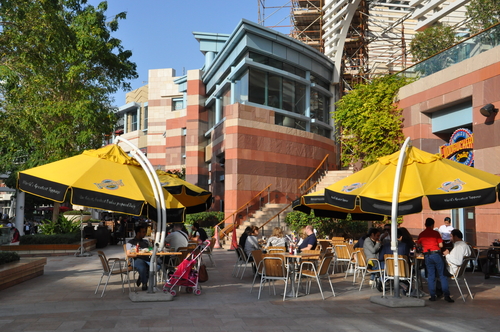
We all know the old adage, “It takes a village.” Now, developers are creating modern villages with mixed-use communities.
All over the world, mixed-use communities are emerging as the new development model for modern cities. In the US, they’ve become popular in cities like New York and Boston. But, creating the right type of mixed-use spaces requires new ways of thinking and a great deal of consideration for the various users and how they interact. There’s also a need to reconsider how we mediate the divide between public and private space.
The idea itself may not be groundbreaking. After all, people love easy access to amenities. Still, there are specific social trends and shifting preferences that drive the need to rethink how these spaces are developed.
The Trends Behind Mixed-Use
So, what’s driving the interest in mixed-use communities? What’s the appeal behind these modern villages? Here are a few key trends:
- Mass Migration: In recent years, people have been flocking to cities from suburbs and small towns. Oftentimes, this is due to an increased interest in access to culture and entertainment.
- Social Engineering: Developers and engineers have changed their thinking and begun to act as sociologists.
- Community: Despite popular opinion that everyone is glued to their phones, people are looking for places to have face-to-face interactions with others.
Increased Amenities
Developers are now competing to win over tenants by offering a wider variety of amenities—beyond the apartment complex pool or gym that have become the norm:
- Dog-Friendly Amenities: A large number of apartment-dwellers are dog owners. This means that, beyond themselves, they are looking for amenities for their furry little friends. These amenities range from dog parks to washing stations and doggy lounges.
- Hotel-Style Facilities: With the shift towards self-employment, people are looking for places to work. They want some separation between their home and workspace, so these tenants seek out developments with common areas to work and meet clients.
- Programming: It’s not just the space. It’s what you do with it! People look to their mixed-use community for opportunities to engage!
- Food and Drink: Everyone in the building might have a kitchen, but they won’t all use it. In some instances, especially walkable cities, apartments have small supermarkets with readymade meals.
The Trends are the Key
The key to success in mixed-use communities is to get the fundamentals right. Amenities make a lot of the difference, and programming should be taken into account within the architecture. Developers can work with urban planners and designers to build out places that are green, healthy, and smart. The underlying philosophy seems to be, “Don’t just be a developer, be a sociologist.”


